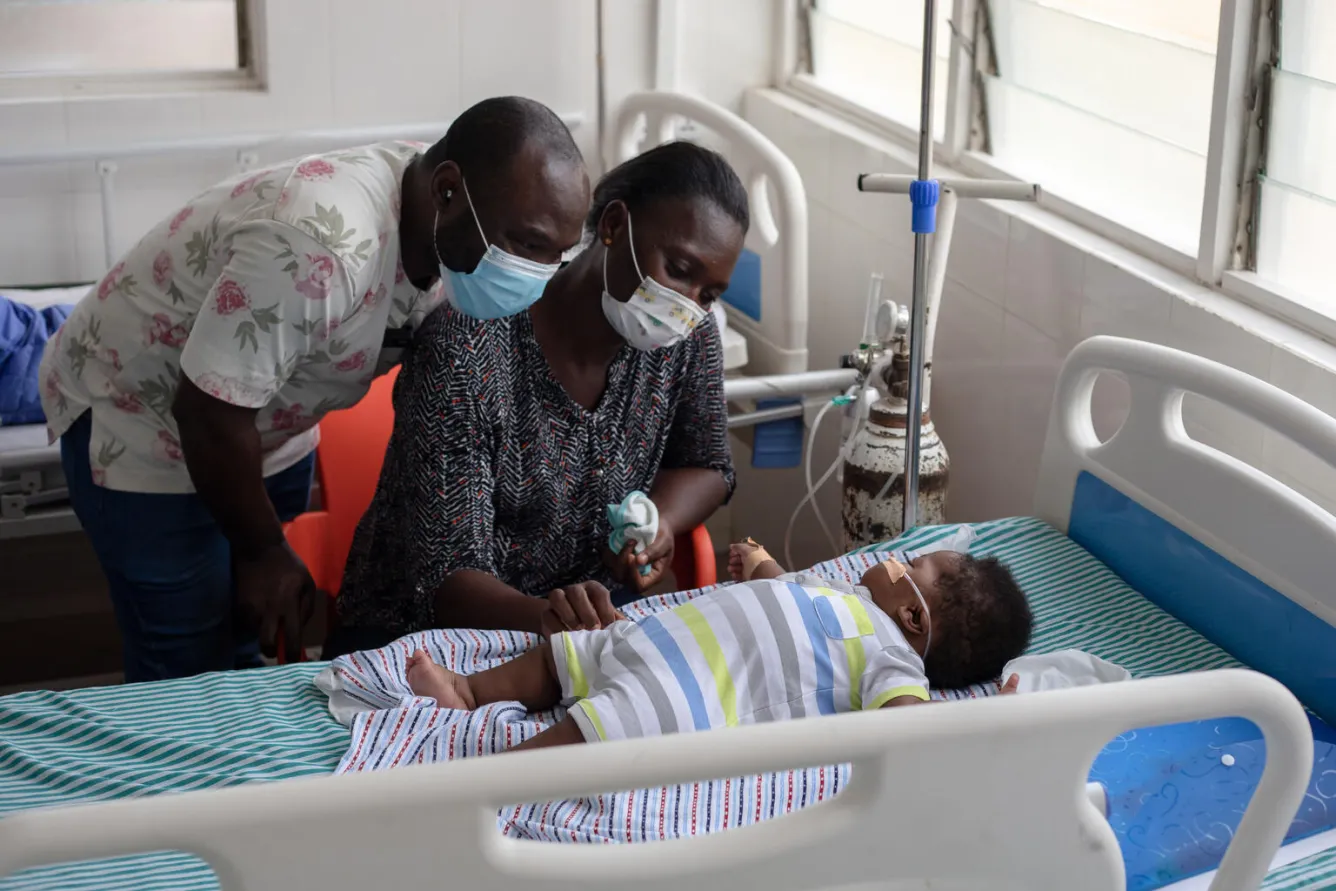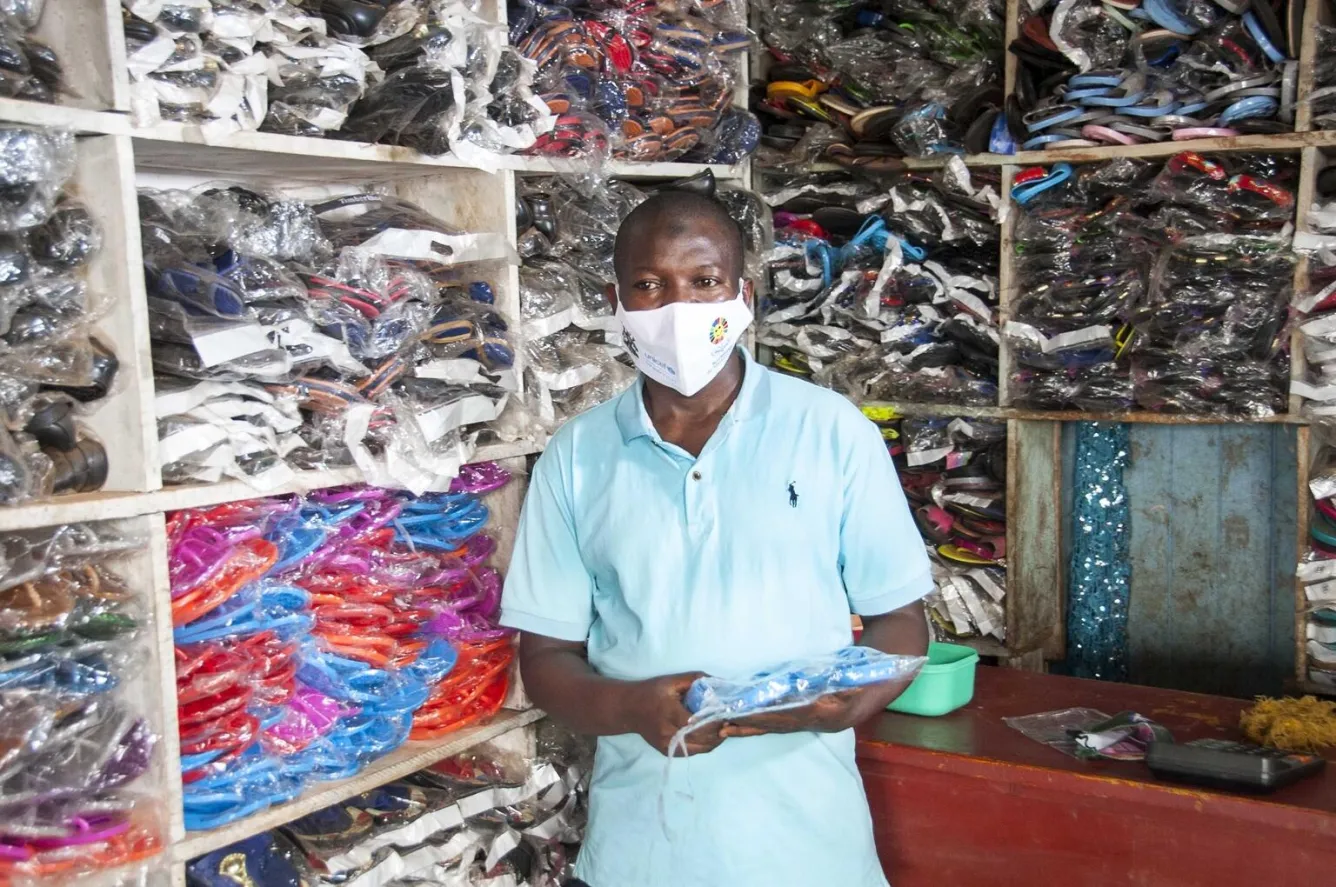Oxygen Plant in a Box: Innovating COVID-19 Response
Access to oxygen can mean the difference between life and death for patients with severe COVID-19. It is also a critical treatment for many of the 30 million underdeveloped or sick newborns born every year as well as children with severe pneumonia, which remains the leading infectious killer of children under 5 years.
However, the COVID-19 pandemic has turned an existing oxygen gap in many low- and middle-income countries (LMICs) into a crisis: over half a million COVID-19 patients in LMICs need oxygen therapy every day. Even before the pandemic, this life-saving medical gas was out of reach for far too many who desperately needed it.

Innovating solutions in the wake of COVID-19
In response to this quickly growing need, UNICEF teams have worked with industry to rapidly develop an innovative emergency solution - the Oxygen Plant-in-a-Box package.
The fully functional oxygen plant package includes everything needed to produce large volumes of medical grade oxygen for patients, including accessories supplied in the right quantities, installation of equipment, and pre-planned maintenance services.
The plant packages are designed to support a medium to large health facility and can be operational within days of arriving.
Each plant has the capacity to produce up to 720,000 litres of oxygen per day, capable of supplying the oxygen needs of about 50-60 COVID-19 patients round the clock or more than 100 children with severe pneumonia.
“Oxygen plants are complex goods that can take six months or longer to design and order,” said Kristoffer Gandrup-Marino, Chief of Product Innovation at UNICEF Supply Division.
“That is why we developed this off-the-shelf package. Pre-designed plants make these products cheaper, and able to arrive in country much, much faster, ultimately meaning we can save more lives at this critical time."
“The Oxygen Plant-in-a-box will play a crucial role in increasing access to medical oxygen, for COVID-19 patients as well as young children with severe pneumonia – a disease which still kills a child every 39 seconds, despite being preventable and treatable,” said Kristoffer Gandrup-Marino, Chief of Product Innovation at UNICEF Supply Division.

The first UNICEF Plant-in-a-Box heads to Uganda
The first four Oxygen Plant-in-a-Box packages have been ordered by UNICEF Uganda and are on their way to health facilities across the country, including in the cities of Masaka, Kabale and Jinja.
Like much of the world, the overwhelming number of COVID-19 patients in need of oxygen therapy has far outstripped existing capacity at many facilities in Uganda.
“COVID-19 has put enormous pressure on health care facilities across Uganda, particularly in terms of oxygen production capacity. Without available oxygen we know COVID-19 patients are not surviving who otherwise could be saved,” said Laura Siegrist Fouché, Deputy Representative, Operations, UNICEF Uganda.
“Even major hospitals in the country have not been able to provide enough oxygen in recent months. There have been reports of many patients needing to be taken off oxygen so the scarce supplies could be given to patients in more critical conditions.”
“These plants will be crucial to help the Government meet oxygen needs for COVID-19, with the country needing an estimated 8,000 cylinders of oxygen daily. Long term, we know they will also be able to be integrated into the health system to provide medical care for children with pneumonia, premature newborns, or patients undergoing surgery, saving thousands of lives.”
